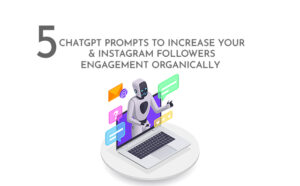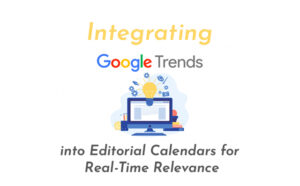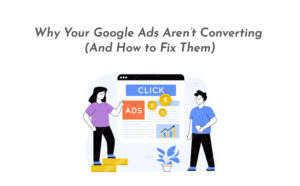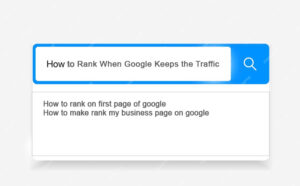Google Ads, formerly known as Google AdWords, stands as one of the most formidable tools in the digital marketer’s arsenal. From small businesses to multinational corporations, organizations of all sizes leverage Google Ads to drive targeted traffic, generate leads, and increase conversions. In this article, we’ll delve into the depths of Google Ads, exploring its features, setup process, optimization techniques, best practices, and future prospects.
1. Introduction to Google Ads
Google Ads, Google’s online advertising platform, allows advertisers to display ads on Google’s search engine results pages (SERPs) and across its vast network of partner websites. With Google Ads, businesses can reach potential customers precisely when they’re searching for products or services relevant to their offerings.
2. The Evolution of PPC Advertising
Pay-per-click (PPC) advertising has witnessed a remarkable evolution since its inception. The concept of PPC traces back to the early 2000s when GoTo.com introduced the first PPC search engine. However, it was Google that revolutionized PPC advertising with the launch of Google AdWords in 2000. AdWords, later rebranded as Google Ads, provided advertisers with a sophisticated platform to create, manage, and optimize their PPC campaigns.
You would like to read: A Guide For Local Keyword Research
3. Key Features of Google Ads
Google Ads boasts a plethora of features designed to empower advertisers and maximize campaign performance. Key features include:
Keyword Targeting:
Keyword targeting lies at the heart of Google Ads’ effectiveness. Advertisers bid on relevant keywords related to their products or services, ensuring their ads appear when users search for those terms.
Ad Extensions:
Ad extensions enable advertisers to supplement their ads with additional information, such as phone numbers, addresses, and links to specific pages on their website. This additional information enhances ad visibility and encourages user engagement.
Audience Targeting:
Google Ads offers robust audience targeting options, allowing advertisers to define their target audience based on demographics, interests, behaviors, and more. Advertisers can tailor their ads to specific audience segments, ensuring maximum relevance and impact.
Ad Formats:
Google Ads supports various ad formats, including text ads, display ads, shopping ads, and video ads. Each ad format serves different purposes and caters to diverse marketing objectives.
4. Setting Up a Google Ads Campaign
Setting up a Google Ads campaign involves several key steps:
Creating an Account and Defining Campaign Objectives:
The first step is to create a Google Ads account and define the objectives of your campaign. Whether you’re aiming to drive website traffic, generate leads, or increase sales, clearly outlining your campaign objectives is crucial for success.
Conducting Keyword Research:
Keyword research involves identifying relevant search terms that potential customers are likely to use when searching for products or services like yours. Google’s Keyword Planner tool is a valuable resource for discovering new keywords and assessing their search volume and competition levels.
You would like to read: The Benefits Of Local SEO For Small Businesses
Structuring Ad Groups and Writing Compelling Ad Copy:
Organizing your ads into well-structured ad groups allows for better targeting and relevancy. Each ad group should focus on a specific theme or set of keywords. When writing ad copy, prioritize clarity, relevance, and persuasiveness. Your ad copy should clearly convey your value proposition and encourage users to take action.
Setting Budgets, Bids, and Targeting Options:
Determining your budget, bids, and targeting options is a critical aspect of campaign setup. Set realistic budgets based on your advertising goals and allocate your budget strategically across campaigns and ad groups. Bid competitively to ensure your ads remain competitive in the auction, and utilize targeting options to reach your desired audience effectively.
5. Optimizing Google Ads Campaigns
Optimizing your Google Ads campaigns is essential for maximizing performance and achieving your advertising objectives. Key optimization strategies include:
Monitoring Campaign Performance:
Regularly monitor key performance indicators (KPIs) such as click-through rate (CTR), conversion rate, cost per conversion, and return on ad spend (ROAS). Analyzing campaign performance allows you to identify areas of strength and opportunities for improvement.
Conducting A/B Testing:
A/B testing, also known as split testing, involves comparing two or more versions of your ads or landing pages to determine which performs better. Test different elements such as ad copy, headlines, call-to-action buttons, and landing page design to identify the most effective combinations.
Utilizing Conversion Tracking:
Implement conversion tracking to measure the actions users take after clicking on your ads, such as form submissions, purchases, or sign-ups. Conversion tracking provides valuable insights into the effectiveness of your campaigns and helps you optimize for better results.
Implementing Bid Adjustments and Ad Schedule Optimizations:
Adjust your bids and ad schedules based on performance data to maximize the efficiency of your campaigns. Increase bids for high-performing keywords or time periods and decrease bids for underperforming ones. Utilize ad scheduling to control when your ads are shown to ensure they appear at times when your target audience is most active.
6. Maximizing ROI with Google Ads
Maximizing return on investment (ROI) is a primary objective for advertisers using Google Ads. To achieve optimal ROI, consider the following strategies:
Understanding the Importance of ROI:
ROI measures the profitability of your advertising campaigns by comparing the revenue generated against the costs incurred. Understanding and optimizing ROI ensures that your advertising efforts contribute positively to your bottom line.
Leveraging Conversion Tracking and Attribution Modeling:
Implement conversion tracking to attribute conversions accurately to the campaigns, keywords, and ads that drive them. By understanding which aspects of your campaigns contribute most to conversions, you can allocate your budget and resources more effectively to maximize ROI.
Continuously Optimizing Campaigns:
Optimization is an ongoing process that requires regular monitoring and adjustment. Continuously analyze campaign performance, identify areas for improvement, and implement optimizations to enhance ROI over time.
7. Best Practices for Google Ads Success
Achieving success with Google Ads requires adherence to best practices and industry standards. Follow these guidelines to optimize your campaigns for maximum impact:
Targeting High-Intent Keywords:
Focus on targeting high-intent keywords that indicate strong purchase intent or readiness to take action. Long-tail keywords, branded keywords, and specific product or service keywords tend to attract users who are further along in the buying process.
Creating Compelling Ad Copy:
Craft compelling ad copy that captures attention, communicates your value proposition, and entices users to click. Highlight unique selling points, promotions, and benefits to differentiate your ads from competitors and drive engagement.
Utilizing Ad Extensions:
Take advantage of ad extensions to provide additional information and functionality to your ads. Extensions like sitelinks, callouts, and structured snippets allow you to showcase specific features, offers, or benefits and increase the visibility and relevance of your ads.
Testing Different Ad Formats and Targeting Options:
Experiment with different ad formats and targeting options to determine which combinations yield the best results for your business. Test text ads against display ads, try different audience targeting criteria, and evaluate the performance of various ad placements to optimize your campaigns effectively.
8. Avoiding Common Google Ads Mistakes
Avoiding common pitfalls and mistakes can help you maximize the effectiveness of your Google Ads campaigns. Be mindful of the following pitfalls and take proactive measures to mitigate their impact:
Neglecting to Optimize Ad Landing Pages:
Ensure your ad landing pages are optimized for relevance, user experience, and conversion. Align landing page content with ad messaging, remove friction points, and optimize page load times to provide users with a seamless and engaging experience.
Ignoring Negative Keywords:
Use negative keywords to exclude irrelevant search terms and prevent your ads from appearing for irrelevant queries. Negative keywords help refine your targeting, improve ad relevance, and reduce wasted ad spend on irrelevant clicks.
Setting Overly Broad Targeting Parameters:
Avoid casting too wide a net with your targeting parameters, as this can result in inefficient spending and reduced campaign performance. Define your target audience precisely based on demographics, interests, and behaviors to ensure your ads reach the most relevant users.
Failing to Regularly Monitor and Optimize Campaigns:
Stay vigilant and proactive in monitoring your Google Ads campaigns to identify performance trends, anomalies, and areas for improvement. Regularly review campaign metrics, test new strategies, and implement optimizations to maintain campaign effectiveness and drive ongoing success.
9. The Future of Google Ads
As technology continues to evolve, the future of Google Ads holds promise for innovation and advancement. Anticipated developments in Google Ads include:
Predicting Trends and Innovations:
Forecasting future trends and innovations in Google Ads requires a deep understanding of emerging technologies, consumer behaviors, and market dynamics. Keep abreast of industry developments, experiment with new features and strategies, and adapt your approach to stay ahead of the curve.
Exploring Advancements in Targeting Capabilities:
Expect advancements in targeting capabilities that enable advertisers to reach increasingly specific audience segments with precision and accuracy. Leveraging data-driven insights and machine learning algorithms, advertisers can deliver highly personalized and relevant ads to their target audiences.
Discussing the Evolving Role of Google Ads:
As digital advertising continues to evolve, the role of Google Ads in the marketing ecosystem is likely to evolve as well. From driving brand awareness and customer engagement to facilitating direct response and e-commerce transactions, Google Ads will play a pivotal role in helping businesses achieve their marketing objectives.
10. Conclusion
In conclusion, Google Ads remains a powerhouse in the realm of online advertising, offering unparalleled reach, targeting capabilities, and ROI potential for businesses of all sizes and industries. By leveraging the features, strategies, and best practices outlined in this article, advertisers can harness the full potential of Google Ads to drive traffic, generate leads, and achieve their marketing goals effectively. As technology evolves and consumer behaviors shift, staying abreast of emerging trends and innovations will be crucial for maintaining a competitive edge and maximizing success with Google Ads. Embrace the possibilities, experiment with new strategies, and unlock the full potential of Google Ads to propel your business forward in the digital age.










